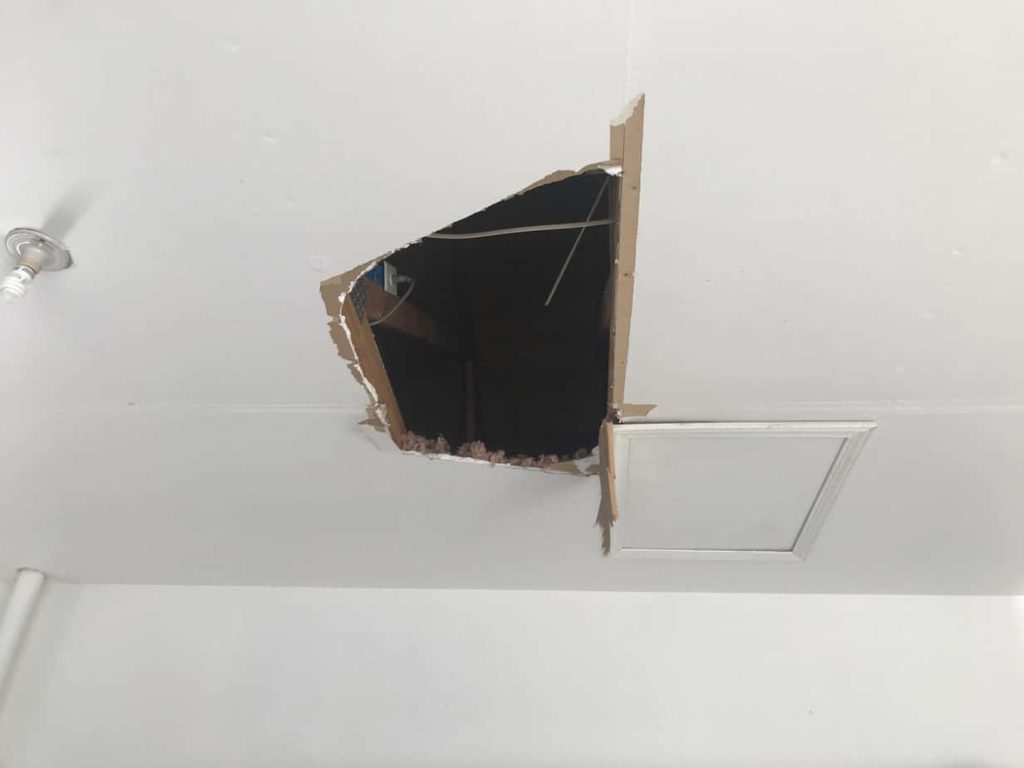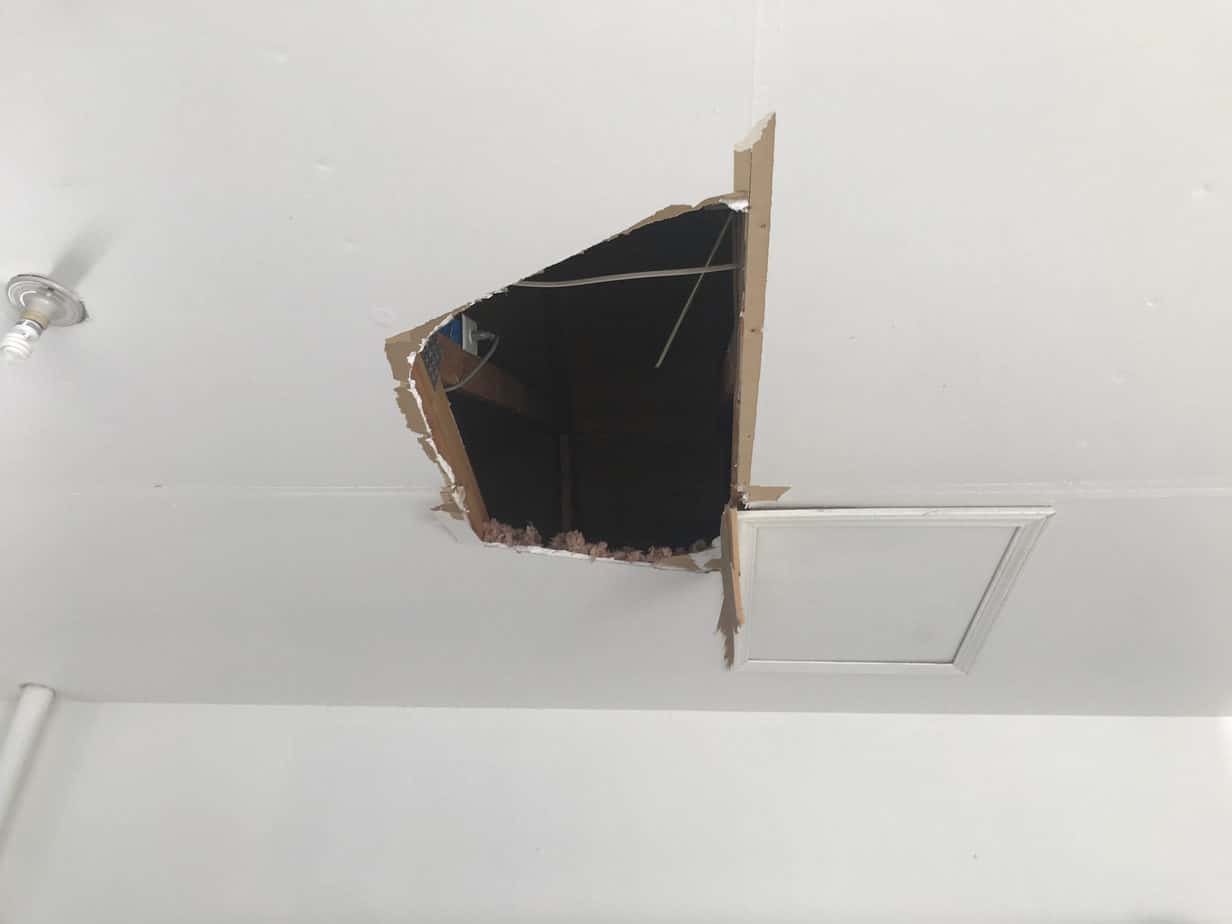Discovering a hole in the ceiling from the attic can be a homeowner’s nightmare. In this comprehensive guide, we’ll delve into the complexities of addressing a “Hole in Ceiling from Attic,” exploring the potential causes, assessing the damage, and providing step-by-step solutions to restore your home’s integrity.

Understanding the Dilemma: Hole in Ceiling from Attic
A hole in the ceiling not only compromises the aesthetic appeal of your home but also poses potential structural and safety concerns. Whether it’s a small puncture or a more significant breach, addressing the issue promptly is crucial. Let’s delve into the various aspects of a hole in the ceiling from the attic, unraveling its causes and offering practical insights into remediation.
Common Causes of a Hole in Ceiling from Attic
- Water Damage: Water leaks from the roof can gradually weaken the ceiling materials, leading to the formation of a hole. This is often exacerbated by long-term neglect or unnoticed leaks.
- Pest Infestation: Insects or rodents nesting in the attic can burrow through ceiling materials, creating holes. Identifying and addressing the pest issue is vital to prevent further damage.
- Structural Issues: If the attic floor joists are compromised or if there’s excessive weight on the ceiling, it can result in structural damage, including the formation of holes.
- Wear and Tear: Aging homes may experience wear and tear, causing the ceiling materials to weaken and develop holes. This is common in properties with outdated or poorly maintained ceilings.
Assessing the Severity of a Hole in Ceiling from Attic
- Size and Location: Measure the size of the hole and note its location. Larger holes or those closer to structural components may require more extensive repairs.
- Potential Structural Damage: Assess the area around the hole for any signs of structural damage. Sagging, cracks, or additional holes may indicate broader issues that need attention.
- Inspect Attic Conditions: Examine the attic to identify the root cause of the hole. Look for leaks, pests, or structural problems that may have contributed to the damage.
Read too: Understanding the Labor Cost to Texture Ceiling and Enhance Your Home: Unveiling the Secrets
Step-by-Step Solutions
- Temporary Patching: For immediate relief, use a temporary patch to cover the hole. This can include using plywood, drywall, or a combination of materials to secure the area until a permanent fix is implemented.
- Identify and Repair the Cause: Investigate the attic to identify and address the root cause. Fix any water leaks, eliminate pests, and reinforce structural components to prevent further damage.
- Permanent Patching: Once the cause is resolved, proceed with a permanent patch for the hole. Cut out the damaged section, replace it with new material, and seal the area with joint compound.
- Ceiling Finishing: After patching, sand the repaired area and apply a primer and paint to match the surrounding ceiling. This ensures a seamless finish that blends with the existing aesthetics.
Preventive Measures for Future Holes in Ceiling from Attic
- Regular Inspections: Conduct regular attic inspections to identify and address issues before they escalate. Look for signs of leaks, pests, or structural concerns.
- Proactive Maintenance: Implement proactive maintenance measures, including roof inspections, pest control, and reinforcing attic structures, to prevent future holes from forming.
- Prompt Repairs: Address any signs of damage or wear and tear promptly. Timely repairs can prevent small issues from developing into more significant problems.
Conclusion
A hole in the ceiling from the attic demands immediate attention to safeguard your home’s structural integrity and aesthetics. By understanding the potential causes, assessing the severity of the damage, and following the step-by-step solutions provided in this guide, you can navigate the challenge of a hole in the ceiling with confidence. Remember, proactive maintenance and timely intervention are essential for ensuring the longevity and safety of your home.
